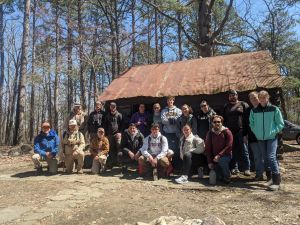Name
Missourian’s and their Community Trees: Results from an MDC Survey
A survey was administered in 2012 including asking respondents how they would vote on two hypothetical ballot questions: would they be willing to pay a tax (of varying level) to fund tree care and maintenance, and would they support establishing a new law to protect trees during development. Based on pre-tests, the survey was printed in 10 different versions, each with a different tax level ($X) in the hypothetical ballot issue. This method, referred to in economic literature as the contingent valuation method, allows the calculation of the population’s mean willingness-to-pay for public tree care and maintenance.
- When asked “How would you vote to establish a tree fund costing each homeowner $X?” over 53% of respondents said they would vote for the fund (across all monetary amounts), 23% against, and 23% undecided.
- The top reasons listed for respondents’ decision on the hypothetical ballot issue were cost (72%), the wording of the referendum (65%), the condition of community trees (62%), and other competing community needs (54%).
- Missourian’s willingness-to-pay for a tree fund in their community varied from a low of $4.47 per household in smaller communities (population less than 5,000) to over $60 in St. Louis and its suburbs.
- When deciding whether to vote for more taxes to pay for tree care, about 80% say trees help with property values is an important factor while only 11% say it would not be important.
- Trees are part of a community’s infrastructure. Eighty-three percent agree or strongly agree that community trees are part of a community’s assets like streets, utilities, and parks.
- There is strong support for tree protection during development and construction, with 84.6% that think protecting trees from development is important and 65% thinking too many trees are lost during development, and 80% think a community should protect trees from construction. Over 53% responded that it is very important or important to have a tree law which defines the communities’ responsibilities in these areas.
- In questions about topped trees, 56% of people said topped trees are not healthy, over 90% said topped trees are not attractive but just 16% said they see topped trees frequently.
- About 72% responded it is either very or somewhat important for cities to manage trees to minimum standards.
- Almost 85% think it is important to prune trees and 90% think it is important to manage trees for safety.
In project: Community Trees
Name
MO_PastTimberPrices_2024_2.csv
Missouri Timber Price Trends (all price from 1994 to the present)
In project: Forest Economics in Missouri
Name
MOFEP Bird Publications
List of MOFEP bird project publications.
In project: Songbirds
Name
MOFEP Ground Flora Publications
List of MOFEP Ground Flora publications
Name
MOFEP Herp Publications
List of publications resulting from the MOFEP Herp project
In project: Herps
Name
MOFEP Publications
MOFEP publication list sorted by year. Project specific publications can additionally be found within their project page.
In project: MOFEP Overview
Name
MOFEP Publications Available on TreeSearch
Published on Jul 07, 2021
Name
MOFEP Small Mammal Publications
List of publications from the MOFEP small mammal project
In project: Small Mammals
MOFEP Tours and Field Experiences
Learn more about our MOFEP tours and field experiences! See photos from previous group trips.
